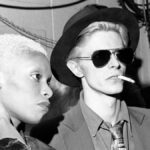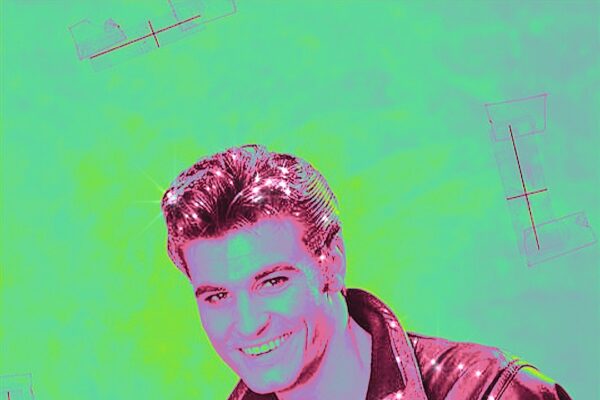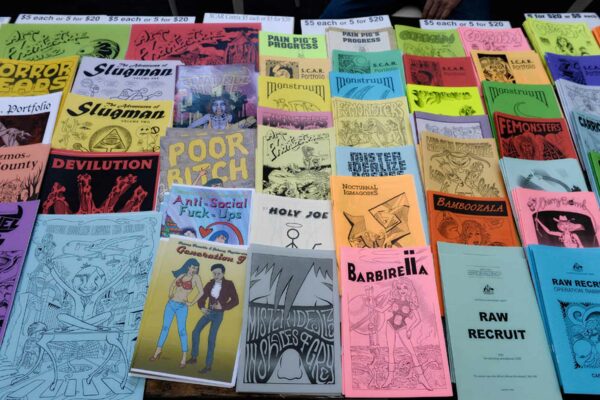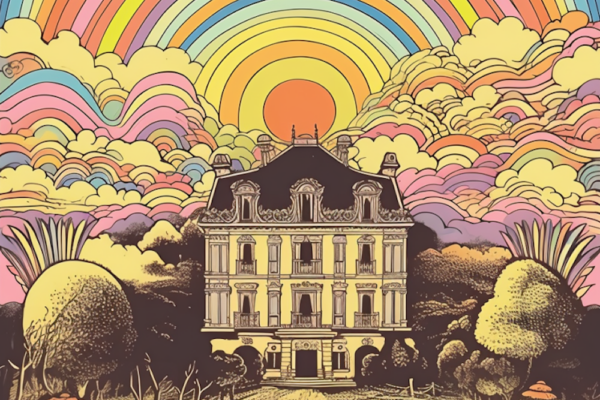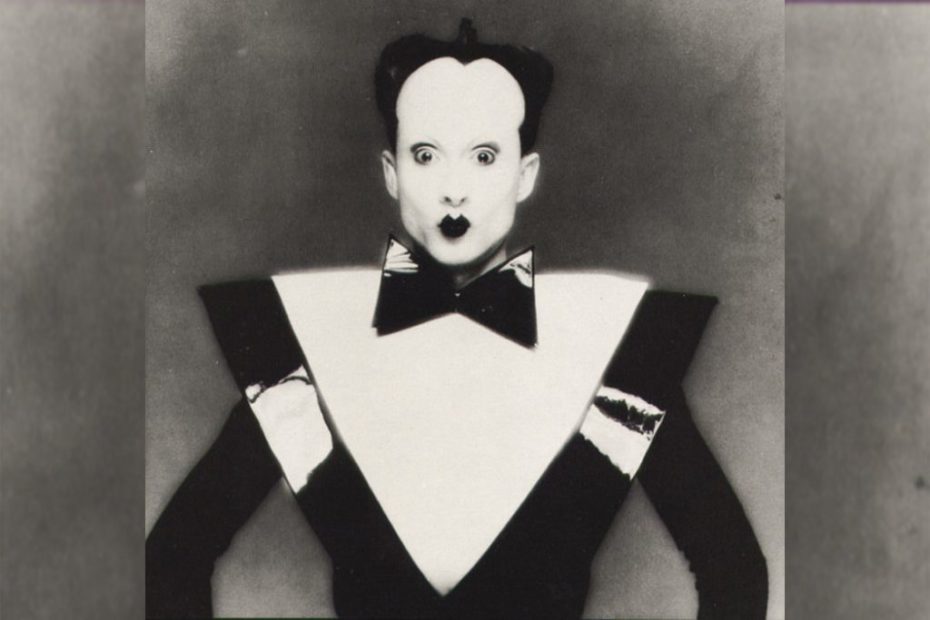
Nobody could do camp quite like Klaus Nomi. He left the downtown New York club scene speechless with soaring operatic vocals, dressed in his signature triangular vinyl tuxedo complete with smoke bombs, punk rock nuances and 1950s sci-fi sound effects. On any given night, you could have found a young Jean-Michel Basquiat or Keith Haring taking part in Nomi’s otherworldly live stage act. When David Bowie heard of this musical “alien” from the East Village making waves in its gritty avant-garde scene, it wasn’t long before the two would cross paths and instantly begin swapping ideas and “jamming away” like old bandmates. The night Klaus debuted on television in 1979 as Bowie’s back-up singer for that ground-breaking SNL performance, NYC’s downtown misfit subculture held its breathe as one of their own was about to break through to the big time and become an international star in his own right. But somehow, here we are, forty years later, discovering the secret trailblazing career of a forgotten would-be LGBT icon, who’s best remembered, if at all, as David Bowie’s one-time back-up singer…
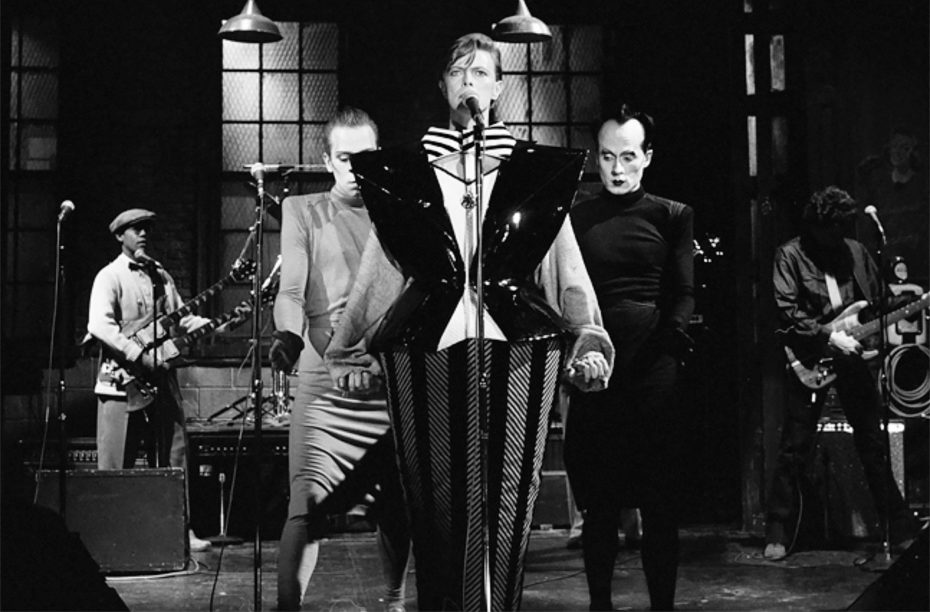
Klaus grew up in West Berlin, learning to sing with the albums of Maria Callas, mimicking her soprano voice (in the same octave). While the rest of Western-occupied Berlin was listening to Elvis on the radio, Klaus was singing arias in drag at the local gay clubs. He was still inspired by the new sound of rock’n’roll that was taking over youth culture, but Klaus wanted to be like Maria Callas and Elvis. After a few years working as an usher at the opera house, practicing his act while the other ushers swept the aisles in between shows, he moved to New York City in 1972 to follow an American boy he’d fallen for. Klaus found a home amongst the outsiders of the East Village; then a playground for artistic misanthropes, anarchists, exhibitionists, queers, poets, punks and everything in between. This was a place for a reclusive like Klaus to shine.
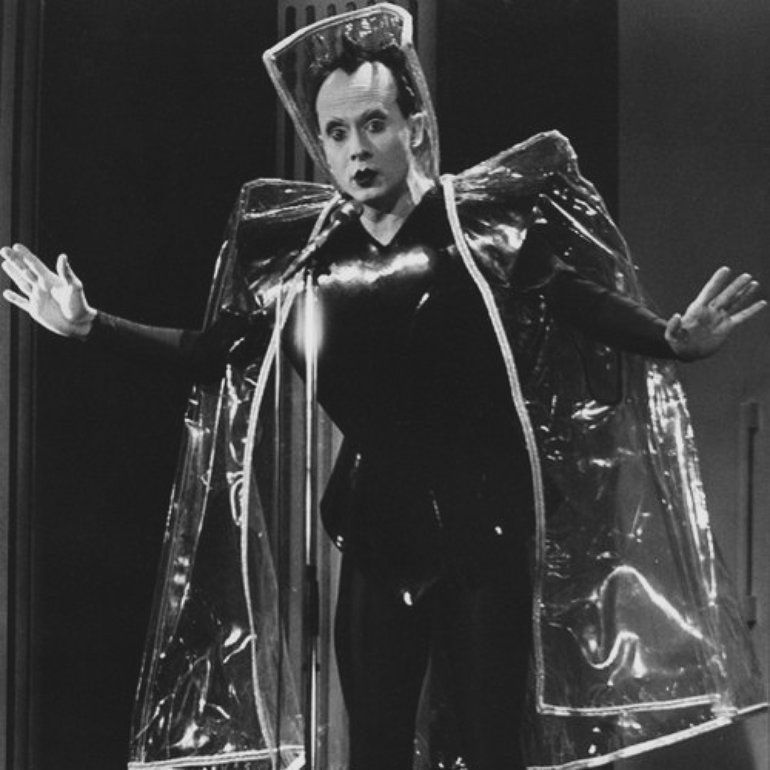
It took a few years, but he made his mark in the downtown art scene in 1978 when he performed a synth-laden interpretation of an aria from Samson et Dalila at an event called the “New Wave Vaudeville”, dressed as a spaceman in a skin-tight suit and clear plastic cape. Drag artist Joey Arias, who would later perform alongside him with Bowie, recalled the night he first witnessed Klaus stun his audience into silence: “I still get goose pimples when I think about it… It was like he was from a different planet and his parents were calling him home. When the smoke cleared, he was gone.”
Word of his retro-futurist act spread fast, and soon enough, Klaus Nomi was appearing at clubs all over New York City, drawing crowds that rivalled Blondie’s gigs at CBGB. In a scene that was already overrun with eccentric and outlandish talent, Klaus had an New Wave act that was like nothing else at the time. Mesmerised audiences could hardly believe that the voice coming from this man dressed like a disco alien wasn’t an electronic recording.
I might as well look as alien as possible because it reinforces a point I am making. My whole thing is that I approach everything as an absolute outsider. It’s the only way I can break so many rules. Remember, my background is totally strange – German classical opera. So I was uncertain about coming from that to rock. It was just as shocking for me to sing opera in a falsetto soprano in Germany. It was another rule I was breaking. You just didn’t do that. And I am helped by the fact that pop and rock, which you would think has no rules at all, is really just as conservative as classical music. So what I do is doubly shocking. The difference is that punk audiences admire that I can shock them. Nothing is sacred to me. Who is making the rules anyhow?
– Klaus Nomi
The 1980s and the dawn of MTV was filled with synthesized dance music and Euro-influenced musicians dressed in futuristic gender-bending get-ups. But Nomi Klaus had been doing it in the East Village since the early 1970s. His own influences came from Bauhaus, expressionism, opera, comic books and Marlene Dietrich movies. He rarely appeared in public without his signature painted lips à la Marlene Dietrich and one of his most popular acts was performing her song “Falling in Love Again”. Those witness to his rise were yet-to-be discovered interdisciplinary artists like Keith Haring and Jean-Michel Basquiat, who was Nomi’s lover for a time. “Jean-Michel and Klaus liked each other. Jean loved it when Klaus spoke German,” Joey Arias told Phoebe Hoban in Basquiat’s biography, A Quick Killing in Art. “But he gave Klaus gonorrhea four times. Klaus got pissed off when Jean wouldn’t help pay for the medical bills.”
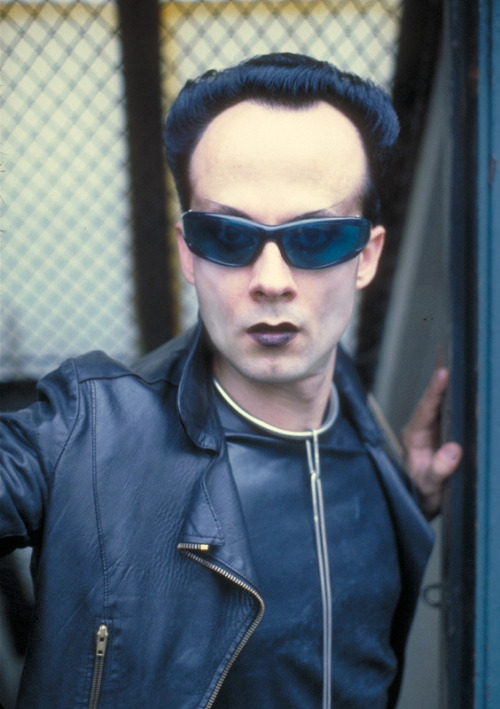
When Klaus first met Bowie, it was 4am at the legendary downtown Mud Club. Klaus’ long-time friend, Joey Arias, spoke to Paper Magazine after David Bowie’s death in 2016, recalling the night they met.
We were getting ready to leave. Someone came over and said “aren’t you going to say goodbye to David?” We turned around, and there was David Bowie sitting in the corner. This Russian hitman friend of mine — it’s a long story — had managed to get past his bodyguards and was waving us over to come and speak to him. So Klaus and I go over, and David starts exclaiming over him, “Oh my god, Klaus! I just got back from Berlin and everyone is talking about you. We have to get together.” At that point, Klaus was getting famous for his space opera, Za Bakdaz. It was 1979. Klaus and I were both wearing these denim jumpsuits — I had red hair — and we both had blazers and jackets on over them with big shoulder pads. He gave Klaus his phone number and said, “please call me.”
Joey Arias
Bowie had found a new muse. The kindred spirits later met at RCA studios to discuss how they could collaborate, which is how the idea to perform together on Saturday Night Live came to be. “He just wanted to hear more and more stories about us and our lives and where we were from and how we grew up,” remembers Joey. “He started lamenting that he hadn’t met us sooner, since he was at the point in his career where he was done with the Ziggy Stardust stuff.”
Klaus and Joey were given a few thousand dollars by Bowie to create their looks for the performance. “We found these Thierry Mugler outfits for sale at Henri Bendel — like, $100 each. When the saleswoman brought it out, Klaus just grabbed it from her hands and ran into the dressing room. It was very much a ‘this is it‘ moment.”
Debbie Harry stopped by the SNL studios to watch them rehearse. This was a time when the show was debuting the most out-there talent and launching them into punk stardom. Bowie wanted to give mainstream America a taste of what was happening in the East Village underground scene. It was Klaus’ moment. Behind Bowie, who was wearing a rigid plastic tuxedo, Klaus jumped octaves with ease and in a second performance, where they all dressed like 1960s air-hostesses, he dragged around a pink toy poodle with a television screen in its mouth. The theatrical show choreographed by Nomi and Arias positioned Bowie as a pioneer of the New Wave genre.
Loose promises had been made to continue working together, but much to Klaus’ disappointment, the collaboration ended there and despite his best-efforts, Nomi would never find a bigger stage than the one he had shared with Bowie. He went on to put out two albums in the early 80s with RCA, mostly sticking to his pop-opera roots and donning a Dadaist tuxedo on his whirlwind European tour, much like the one David had worn for the SNL performance. The two musicians had inspired each other in more ways than one, but did not cross paths again.
In this recording of French television show in 1982 (above), Nomi performs one of his earliest pop-opera songs, “Nomi Song” only to be met with a rather confused and unenthusiastic applause from the audience at the end. The mainstream world was not ready for Nomi, reminding us that oftentimes, as the saying goes, with the groundbreakers, all they get to do, is break the ground.
That same year, Klaus Nomi was diagnosed with what was then still being referred to by the mass media as the “Gay Men’s Plague.” He continued to perform in the final months of his life, wearing an operatic outfit with a Baroque-style collar that hid the skin lesions on his neck. He was one of the first gay musical trailblazers from the East Village scene to fall victim to AIDS. Few friends, if any, visited Klaus in hospital, too afraid of catching the “mysterious” disease. Klaus Nomi died alone in August 1983 at the age of 39 as a result of complications from AIDS. Despite having lost touch with his long-time collaborator, Joey Arias became the executor of his estate.
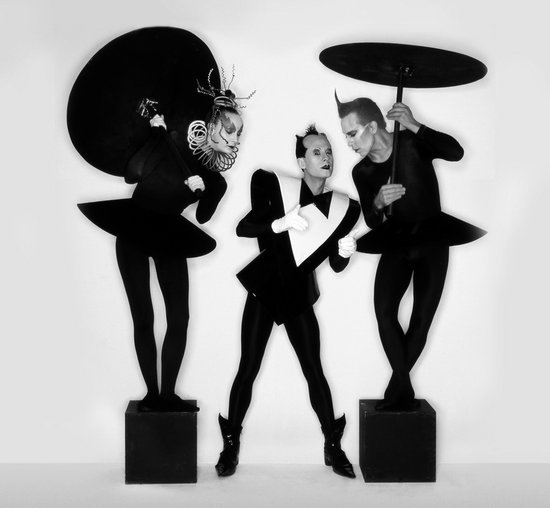
Nomi’s aesthetic has since made numerous appearances on fashion catwalks since his death (notably at Balmain in 2013) and his sound has undoubtedly been repeated in electronic music of the early 2000s. He had an instinct for mixing high-brow with low-brow, embodying the very definition of camp which has come full circle to lead the trends in pop culture today. There is no saying how Klaus Nomi could have further impacted music and pop culture had he lived.
In the 2004 documentary, Nomi’s Song, American musician Kristian Hoffman who wrote many of Nomi’s best-known songs, speaks of his friend from a galaxy far far away…
I just tried to think of him as this alien presence who had come to earth to unite these people that were kind of like fashion victims and disco outcasts, and make them be sort of like the foam that was going to rise to the surface of humanity if they joined forces.
Kristian Hoffman




